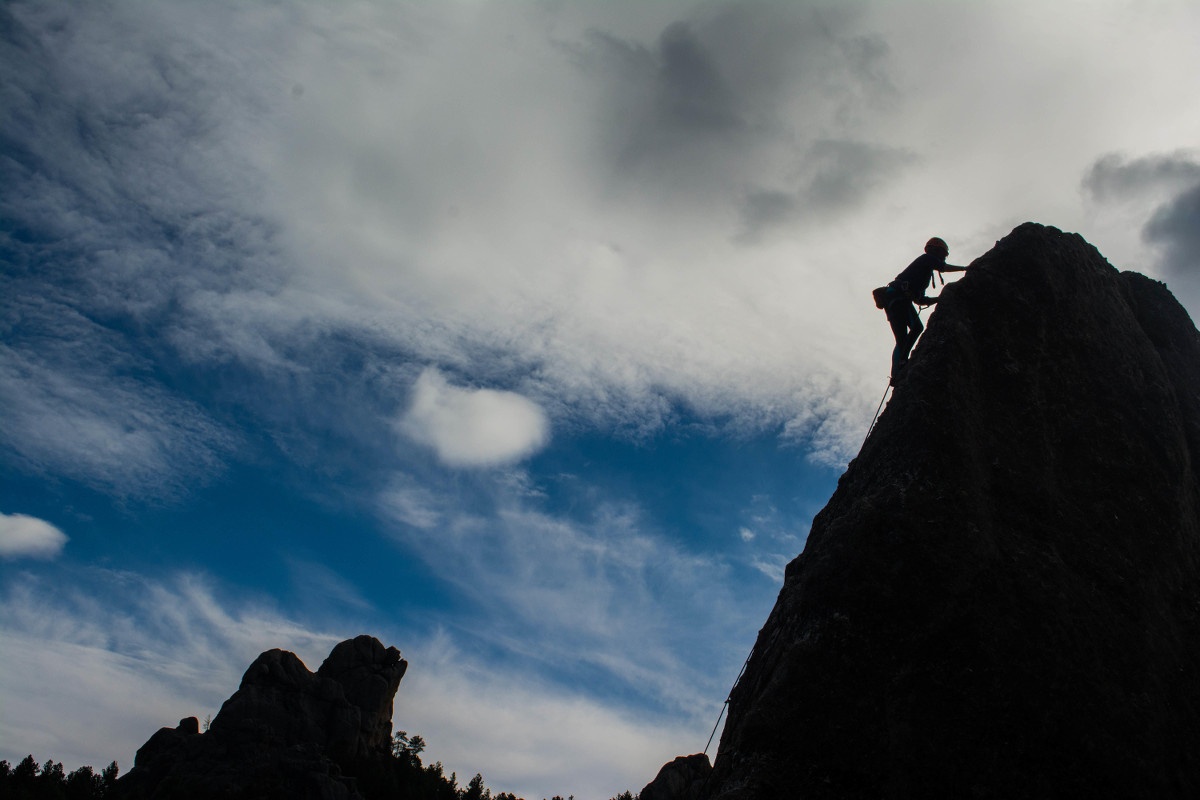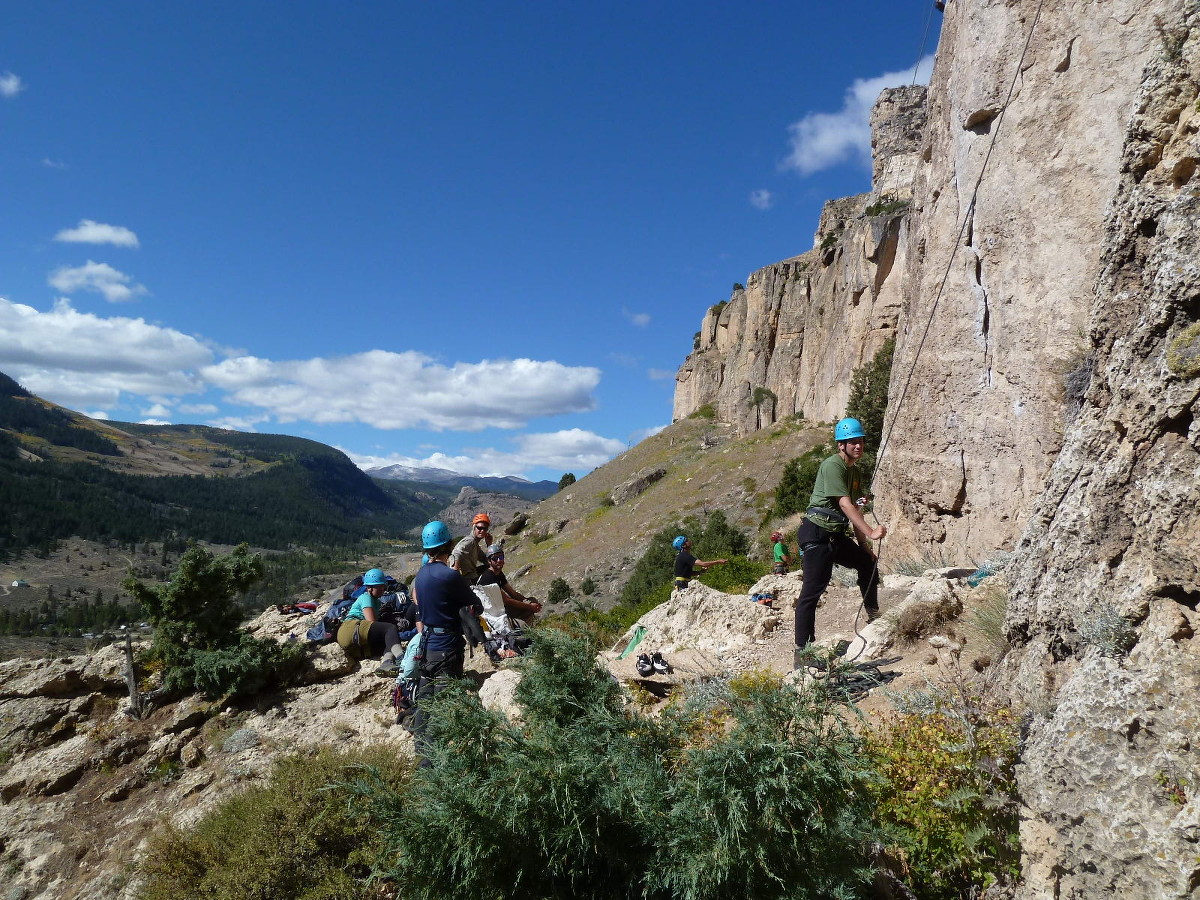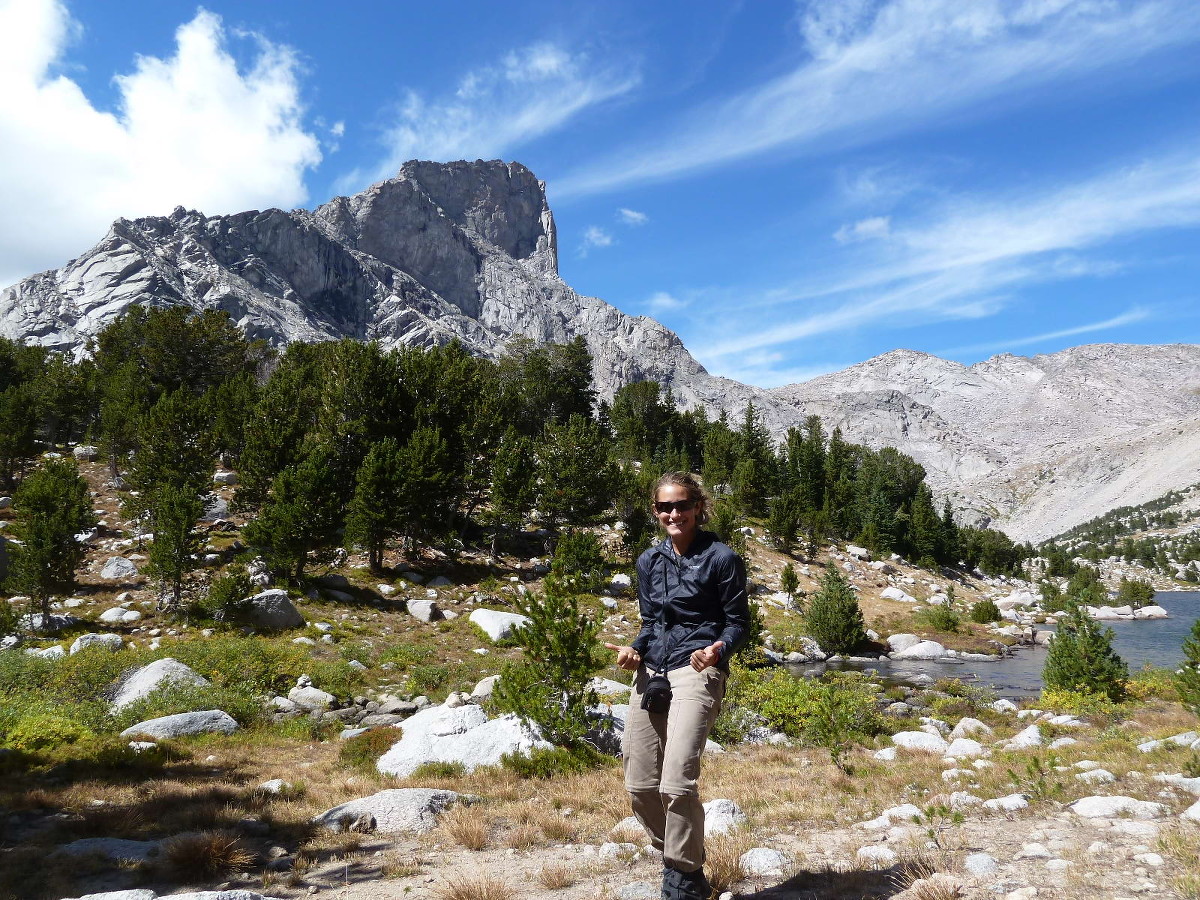
23 days, 12 students, 4 instructors, and 1 epic adventure. This fall, I participated in an Outdoor Educator course with NOLS in Lander, Wyoming.
Prior to the trip, I did my best to clear my head of all expectations and simply embrace the experience, yet the few expectations I had were exceeded. While I'm not sure if I want to be an outdoor educator, my love for the backcountry has been reinvigorated and I’ve gained confidence in both my technical and leadership skills.
At the beginning of our trip, we were 12 strangers and now we know each other as if we've been friends for years. That's what happens when you sleep, poop, eat, sweat, and hike with one another non-stop for three weeks. We essentially created our own community with its own social rules, political structure, values, and norms. It exists nowhere else and while it has now been dissolved, the bonds we’ve made remain.
Rather than try to provide a synopsis of the experience, I'm going to summarize the top 10 rules of backcountry living.
1. Mobile home
Nearly every day for two weeks we had to find and create a new home. Talk about exhausting. Sometimes, the "X" on our maps was in an excellent camping area with ample flat spaces and a water source. Other times, we ended up setting camp hundreds of yards from our "X” and our water source was a bog, full of snakes. Each time, we followed Leave No Trace principles and created a space that felt like home, even if it changed every night.
2. Backcountry bidet
There are no toilets in the backcountry, let alone toilet paper. So, how does one go to bathroom? For going #1, all of us ladies carried around what were deemed "pee rags", i.e., bandanas tied to the outside of our packs that we used to wipe after peeing. Don't get too close when hiking behind us.
Going #2 is where it got creative. I'm going to break it down into 10 easy steps:
- Decide that you need to go to the bathroom.
- Grab a trowel, soap, water, and bear spray.
- Walk at least 70 paces from the tent site and find a good spot to dig a hole.
- Dig a hole at least 6 inches deep.
- Do your business.
- Choose your toilet paper. (My personal preference is pine cones.)
- Pour some water on your least favorite hand and bidet yourself.
- Stir up all the stuff in the ground with a stick (to help facilitate composting).
- Bury it (don't use the trowel).
- Wash your hands, thoroughly. Long live the bidet!
3. Vampire socks
No, I didn't carry socks that smelled like garlic. Rather, I designated a pair of socks to live in my sleeping bag that never saw the light of day. Why? When you spend 8 hours hiking in wet boots and socks and then make your home 10,800 feet up in a hail storm, the best part of your day is getting into your sleeping bag and finding your vampire socks, dry and warm.
I learned that as long as your feet are dry and warm for 8 hours at night you will not develop trench foot. Even if you hike all day in cold, wet boots.

4. (Dis)comfort
In the backcountry, you learn very quickly how to find comfort in discomfort. In fact, I'd say I was always mildly uncomfortable. And now, the ABCs of discomfort ...
- Altitude illness
- Blisters
- Cold
- Dehydrated
- Exhausted
- Flies
- Gassy
- Hungry
- Insects
I could continue, but you get the picture.
5. Don't freeze, eat cheese
Cheese deserves special mention. When you hike all day carrying at least 40 pounds of weight, you're burning calories like nobody's business. What better way to refuel than a fatty block of cheese? Are you running low on snacks? Take a hunk of cheese! Can't wait until dinner? Make a "cheesetizer". Not sure what to make for dinner? Start with a block of cheddar, then add pasta or rice. The best way to stay warm when it’s 30 degrees at night? Eat cheese! Fats take longer to digest and will keep your body working through the night.
"Don't freeze, eat cheese!" WARNING: Eating cheese 2-3 times per day will change the color of your poo, i.e., “NOLS Gold”
6. Creative cooking
We carried around seven days of food with us at a time. After one week, we would hike to a spot to re-ration, which came in by horse or van. Re-ration day always felt like Christmas, especially when we found malt balls! What did we eat? You're probably thinking rice, beans, oatmeal, and cheese. I'm here to tell you we ate pretty darn well. We made spaghetti, pizza, cinnamon rolls, and even cake. We had our fair share of cheesy pasta and oatmeal, too.
With just one stove, a spatula, and a pliers, you have to get creative. I've opened shrink-wrap with pliers, sliced cheese with a spatula, and incubated dough under my jacket. I've put bacon bits in pancakes, cake batter in hot chocolate, and pumpkin seeds on pizza. There’s no room for picky eaters in the backcountry!
7. Hot drink!
No meal is complete without a hot drink. Just think—that hot water could become coffee, hot chocolate, cider, tea, or even hot lemonade (because why not?)! It became an unspoken rule on our course that the first one up in the morning gets water boiling, even if it isn't your day to cook. Another unspoken rule, make a hot drink after dinner.
8. Feedback
If you're going to live with 14 complete strangers for 23 days in the backcountry, then you’d better learn how to provide feedback. You don't have the luxury of going home at night and forgetting about someone's comment because that person lives with you. In fact, they do everything with you, maybe you even dig holes together.
With so many different personalities and levels of experience, you have to avoid being too blunt or too passive. Feedback must be timely and courteous. We practiced giving feedback every day, whether it was about a class a student taught, how they led their hiking group that day, or how well we rationed food. Personally, I don't think we do a great job of providing feedback in the frontcountry, and we should definitely do it more!
9. River crossings
River crossings can be the most dangerous part of the backcountry. The water can be swift, cold, deep, rocky, and completely unpredictable. The first rule of river crossings is you don't have to cross it. Fortunately, no one was injured while river crossing on our trip; however, we all failed in assessing this particular hazard at first due to the prospect of wet boots.
We were taught the different ways to cross a river: Tripod method, Chain, and Eddy Line. None of the rivers we crossed were high, but they were cold and in some spots knee-deep. The hiking group I was with one day decided we were going to jump rocks to cross it. Two of us also decided to put on our Keens to keep our boots from getting wet. When we told our instructors about this idea, they shut it down.
Quite simply, you never make river crossing decisions based on avoiding wet boots. Boots are sturdier and provide better grip when crossing a river.
10. Expedition behavior
If someone asks about your expedition behavior, they are essentially asking whether you are a team player. Are you taking care of yourself? Do you go out of your way to practice good LNT? Do you have a good attitude? The latter is perhaps the most important, besides managing risk, of course. Keeping a positive attitude isn't always easy, but it sure is necessary. I can think of numerous times where we could have easily sulked or become angry because of the circumstance, but we didn't, or at least not for long.
Here are some ways to exhibit good expedition behavior:
- Are you cold? Don’t just sit there. Exercise, eat cheese, drink something warm, do the boot dance with a friend (this basically looks like the cold-weather version of the can-can).
- Is the water source far away? Pick up your team's water dromedary and fetch some water. In fact, offer to fill up other team's water containers, too.
- No one is volunteering to carry the bear fence? Volunteer.
- No one wants to hike down the mountain and back up to get climbing gear? Volunteer.
- No one feels like cooking? Volunteer.
- Is someone having a bad day? Talk to them, listen, throw in a hug for good measure.
- Feeling dehydrated? Hungry? Hot spots on your feet? Take care of yourself! It isn’t anyone else’s job to remind you.
- Did you wake up with frost on your sleeping bag? Bummer. Everyone else in the same boat, so laugh and start scraping it off.
- Is the weather not perfect? Is it windy, snowing, or hailing? Smile and be glad you have hot food coming. Then make a hot drink.
- Do you smell? Does everybody smell? Either find some sage and shove it up your nose or just embrace it.
That just about covers it.
I'm only kidding—of course, there is much more, but these are the highlights to give you a sense of the NOLS culture and what living in the backcountry with complete strangers looks like.

I now know how to use a topographic map and compass to find an "S" on a map with no trail. I can tie 10 different knots, depressurize a stove to bake a cake, fly fish, and wipe my butt with pine cones. I've learned how to deal with conflict, provide feedback, lead hiking trips, teach classes, and am even certified to teach LNT principles. I've increased my tolerance for adversity and uncertainty.
Most importantly; however, is what I've learned about myself and the new friends I've made.
Written By
Liz Blair
Liz Blair grew up in mid-coast Maine where she developed an appreciation for the outdoors. She attended school at Northeastern University in Boston, MA where she studied Supply Chain Management Sustainable Business Practices. Since then she's lived many lives, and now currently resides in southwest Colorado after having completed a 6-month solo cross-country road trip. In her spare time she enjoys hiking, backpacking, trail running, cycling, cross country skiing, yoga, and beekeeping.



